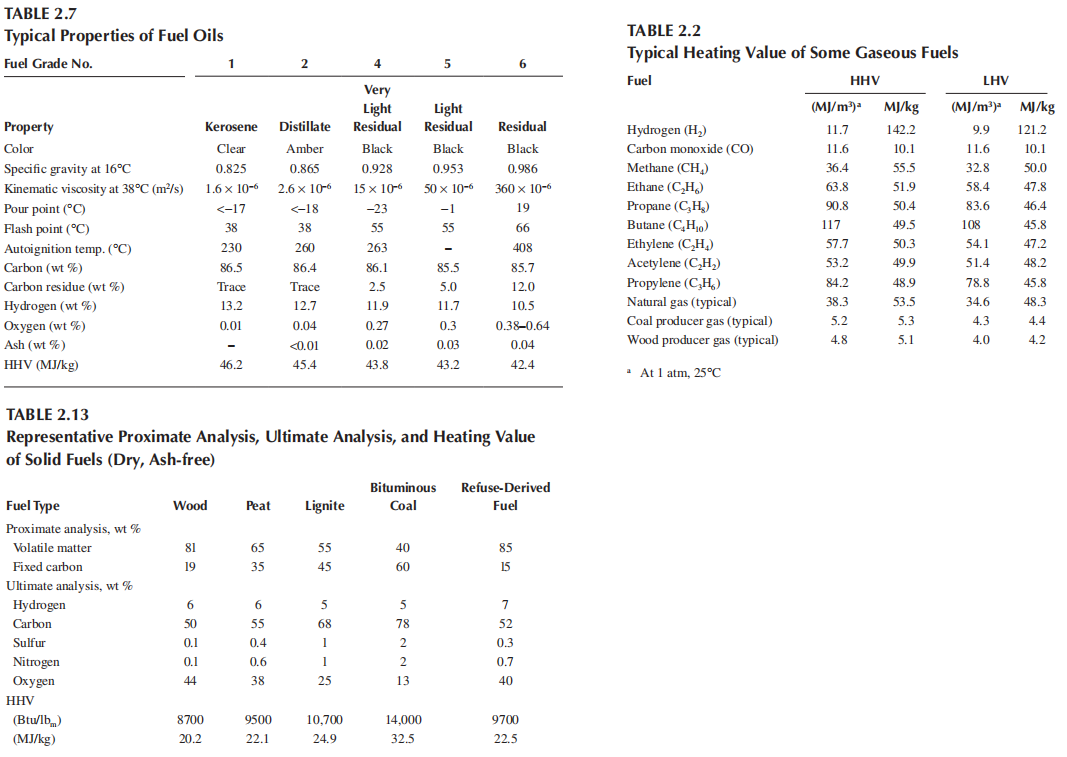In the United States, energy for household heating is generally sold using English units, e.g., therm, gal, and cord. A house in Wisconsin uses 1200 therms of thermal energy during the heating season. Calculate the cost of fuel if the furnace uses (a) natural gas with an efficiency of 70%; (b) No. 2 fuel oil, efficiency 65%; (c) kerosene, efficiency 99.9% (unvented); and (d) wood with l5% moisture with an efficiency of 50%. Use the data in Tables 2.2, 2.7, and 2.13. The efficiencies are based on the HHV. Assume the cost of natural gas is $8/MBtu, the cost of No. 2 fuel oil is $3/gal, the cost of kerosene is $3.50/gal, and the cost of wood is $100/cord. Assume the bulk density of cord wood is 30 lbm/ft3 .
In the United States, energy for household heating is generally sold using English units, e.g., therm, gal, and cord. A house in Wisconsin uses 1200 therms of thermal energy during the heating season. Calculate the cost of fuel if the furnace uses (a) natural gas with an efficiency of 70%; (b) No. 2 fuel oil, efficiency 65%; (c) kerosene, efficiency 99.9% (unvented); and (d) wood with l5% moisture with an efficiency of 50%. Use the data in Tables 2.2, 2.7, and 2.13. The efficiencies are based on the HHV. Assume the cost of natural gas is $8/MBtu, the cost of No. 2 fuel oil is $3/gal, the cost of kerosene is $3.50/gal, and the cost of wood is $100/cord. Assume the bulk density of cord wood is 30 lbm/ft3 .

Trending now
This is a popular solution!
Step by step
Solved in 3 steps with 4 images


